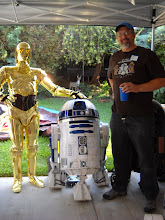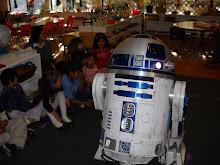
And then I cut the outer pieces. Here I've screwed them together and put the curve line on them to be cut out. By screwing them together and cutting them at the same time I save time and I get the curve on both of them exactly the same.

I have found that for curves with a small radius like this (anything less than 9"), I get the best results by roughing in the cut with the bandsaw and then finishing it on the belt sander:


I got that belt sander from Grizzly Tools when I was building kitchen cabinets and furniture more and had a lot of sanding. It is huge--the sanding area is 6" x 48", I think. And it tilts up with this table on the side for doing right angles. It cost a bundle at the time, but it's been worth every penny. It's a 220 volt machine which required some creative wiring in the shop, but the motor doesn't bog down under any load that I've put to it. The results here are fine:

The curve cut has exposed a couple of small voids in the plies, so bit of body filler putty and another light sanding and they are ready to go:

Since these edges will be up against a larger piece, it won't be possible to sand them or finish them effectively once the center leg is put together, so I save myself a lot of hassle by getting them paint ready before they go together:

The whole stack of all four pieces will look like this:

And then screwed and glued together with another run on the belt sander to get all four edges clean and flush:

You can see the layout marks on a design modification I've made on the R2 plans here. I've sloped one side of the pivot point back at an angle so that it will all rest flush into the slot on the foot shell. The one on the right has the line for the cut that the plans call for. The pointed design on the real R2 isn't very good for several reasons. First, there's a lot of weight and torque that gets put on a relatively small area here. This front foot shells will be leading into cracks in the sidewalk and all kinds of rough terrain. Leaving more material here makes the joint stronger. Second, if you watch the discussions on the club board, everyone is having problems with their foot shells popping up and shifting around. So it's common for builders to go back and add ankle locks to keep the foot shell in position. This is a much sturdier, more effective ankle lock. And with the full length of that section resting down into the slot on the foot shell, the weight is distributed better. The alteration will be visible from the back if someone got down close to look at it and knew what the real one looks like. But the advantages here outweigh the disadvantage. And here's one more shot from the side. You can see that the lines are clean, straight and smooth. All done with power tools--no long hours scrubbing with sandpaper by hand.








No comments:
Post a Comment